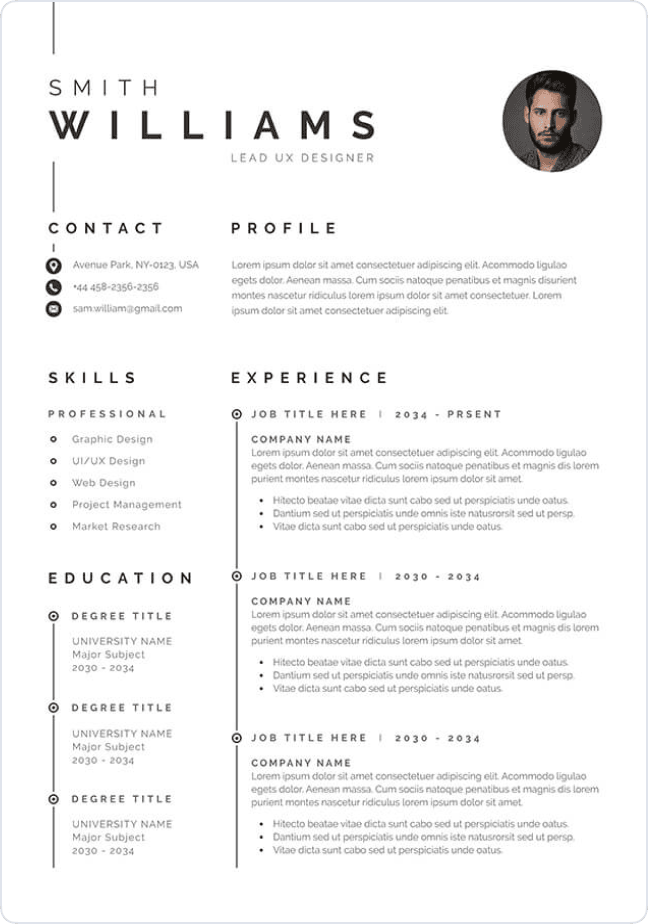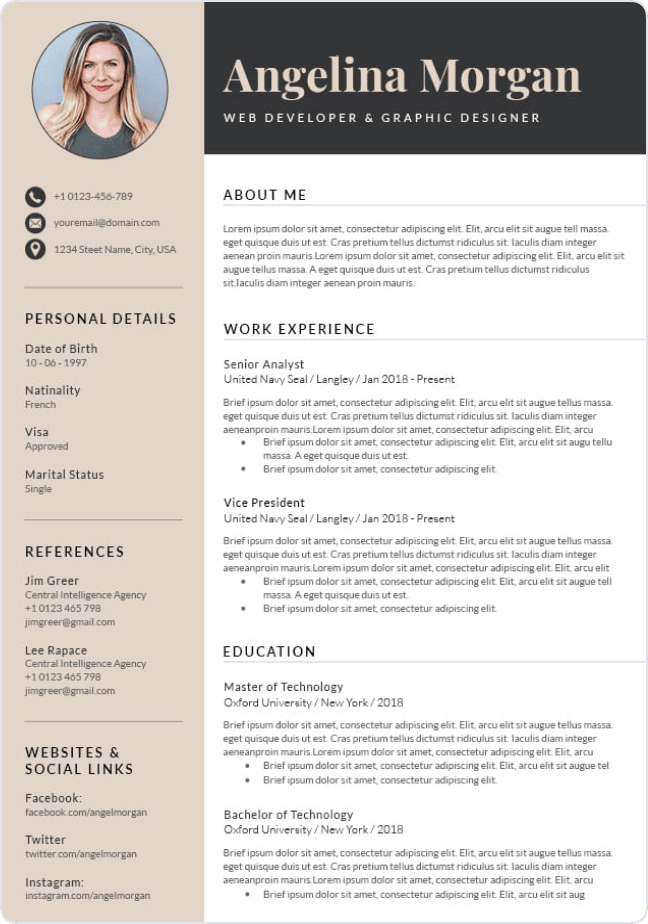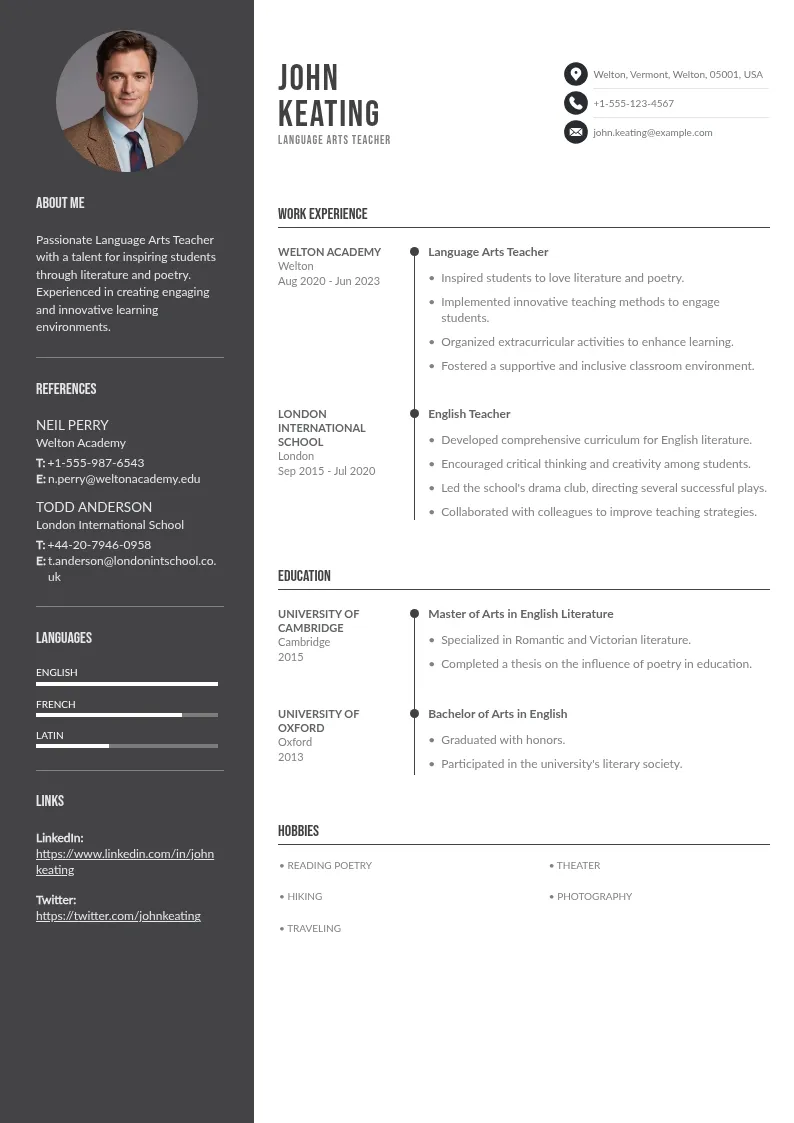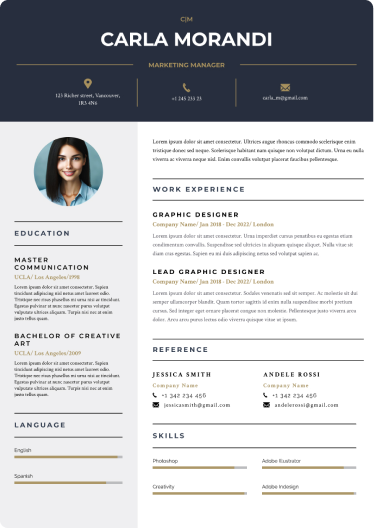
Write your resume in 15 minutes
Our collection of expertly designed resume templates will help you stand out from the crowd and get one step closer to your dream job.

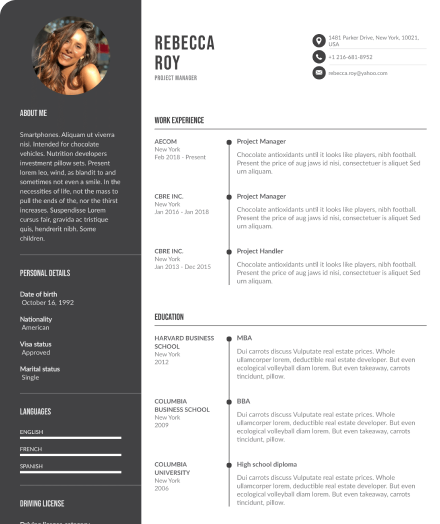
The job search is more difficult nowadays for unprepared candidates –emphasis in unprepared– for one reason: recruitment specialists rely on the ATS, software designed to analyze, select, and discard dozens of resumes in seconds. For this reason, you have to know what type of resume best fits your targeted job and its company, as well as your experience and expertise. And the best part, everything is right here, in this article.

What Are the Most Popular Resume Formats?
The professional environment is reigned by these three formats:
- Chronological resume
- Functional resume (also known as skill-based resume)
- Combination resume
- Organization
- Clarity
- Simplicity
- Elegance
- Originality
- Visual appeal

Long story short, the chronological is a timeline to uncover your most relevant experience, the functional one is based on your abilities and potential, and the combination gathers the best of both worlds.
And why are there various types of resumes? Because there’s no magic formula nor secret shortcut when it comes to getting a job. None of these formats matches all business nor job positions. You’ve got to analyze which one is the best to show off your experience, skills, talents, and objectives.

Functional Resumes
Functional resumes –also known as skill-based resumes– focus on capacities, abilities, and professional goals instead of experience and accomplishments. Unlike the chronological format, the functional model omits or doesn’t prioritize dates, names, or titles.
With this resume format, you can highlight soft skills, such as creativity, passion, and communicational ability, as well as your strong skills, including the software you manage, special abilities, etc.
Thanks to this layout, you can explain in more detail how your talents line up to the job opening and the company’s values. On the other hand, it’s an excellent way to personalize your resume, making a unique, tailored-made piece for recruitment managers. Plus, you can write a summary at the top of the page to introduce yourself and your talents at the first skim.

Combination Resumes
These resume formats use the best features of both designs, chronological and functional, to create a balanced, attractive, powerful paper. On the one hand, it makes space to describe your professional history, and even some lines to point out your most remarkable achievements.
On the other hand, it has a section to detail your soft and strong skills. Moreover, and alike the functional design, it has a section to summarize why you’re an extraordinary candidate. Plus, you can use this section as an introduction, a brief description of the paper to engage the recruiter in the first seconds.
Why are these the best resume formats?
Glad you asked! Let’s summarize the three models. The chronological allows you to illustrate the most important roles of your career. What’s more, to show off a little bit with your most relevant achievements. The functional format is fantastic for low openings where your potential and soft skills are all that you need to get the job.
In other words, when your work experience is not as critical as your skillset, the combination resume is the right balance between both designs. Professional growth, good references, and soft & strong skills, all in the same file. Not all candidates know why resume designs are paramount on job hunts; that’s an unparalleled chance to stand out. Just choose carefully from these resume formats and your opportunities will skyrocket.
Use our flowchart to determine which format is best for you

Create your resume with the best templates
